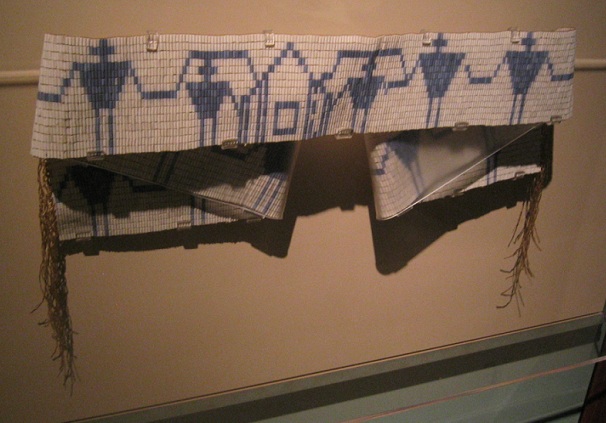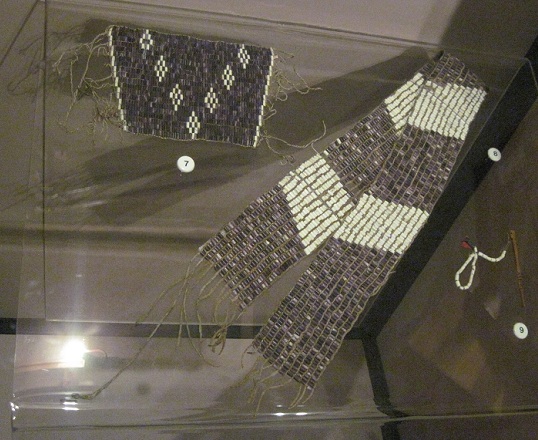Subject: sachem war chief
Culture: Iroquois & allied Indians
Setting: French & Indian wars / Pontiac's war / American Revolution, Great Lakes/Ohio Valley 1702-1784
Object: wampum belt
Carnegie Museum of Natural History > Alcoa Foundation Hall of American Indians *
"GEORGE WASHINGTON COVENANT BELT (REPRODUCTION) Jake Thomas, Six Nations Reserve, Ontario, Canada, Cayuga, 1995-1996
The original Washington wampum belt is most often identified with the Canandaigua Treaty of 1794, which pledged peace between the United States and the Six Nations of the Iroquois (the Senecas, Mohawks, Oneidas, Onondagas, Cayugas, and Tuscaroras). However, it was probably a gift to the Iroquois Confederacy from the United States at a treaty signing in 1789. The large figures represent the thirteen original states.
The central building is probably an Iroquois longhouse flanked by the Confederacy doorkeepers,
the Senecas on the west and the Mohawks on the east.
It stays in the custody of the Onondaga nation, the keepers of the confederacy's central fire.
"Plastic (electrical wire insulation), artificial nylon sinew, Ritz commercial dye" ...
* Peabody Museum of Archaeology and Ethnology > Change and Continuity: Hall of the North American Indian [right]
"Wampum Belt (Iroquois and Algonkian) This particular belt, which commemorates a peace treaty between the Algonkian and the Iroquois in the seventeenth century, is a very rare and extraordinary piece. It was acquired in 1901 from a Mohawk chief (name unrecorded) on the Caughnawaga Reserve near Montreal. According to ths individual, the diagonal bars were not used except in treaties between nations. They represented braces that were to strengthen the compact between the two nations." ...
*

